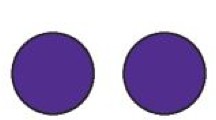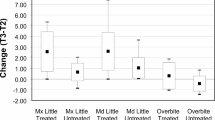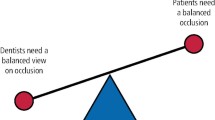Key Points
-
Changes in patterns of tooth loss, and an ageing population, may mean that there will be an increase in the number of partially dentate patients.
-
The type and extent of occlusal change may compromise restoration of the unopposed tooth and teeth bounding the extraction site.
-
Strategies to prevent undesirable tooth movements may be indicated.
Abstract
Objectives To determine the incidence and extent of overeruption in unopposed posterior teeth; to determine the incidence of occlusal interferences associated with unopposed posterior teeth; and to detect an association between the extent of overeruption and the presence of occlusal interference.
Design The study was a single centre clinical retrospective analysis. Setting The setting was in the Combined Care Clinic of Leeds Dental Institute. The patients were undergoing routine restorative care by final year undergraduate dental students during 2000.
Subjects and methods All patients over18 years of age with one or more unopposed posterior tooth, were invited to participate. A sample group of 120 subjects were recruited. A clinical occlusal examination was carried out and the presence of initial retruded contact position (RCP) contacts and excursive interferences were recorded. Study models were made and digitally scanned.
Outcome measures Measurements of overeruption from the curve of Spee were made from the images obtained, by a single observer. Reliability of the measurements was assessed by means of a Bland Altman Plot. The presence and site of RCP contacts and excursive interferences were recorded by a single observer. Reliability of the measurements was assessed by means of Kappa scores. The association between overeruption and the presence of occlusal interference was examined using Spearmans Correlation Coefficient.
Results A total of 120 subjects were recruited, with a total of 155 unopposed sites. Eighty-one of the sites belonged to male subjects, 74 to female subjects. The mean age of the group was 50.9 years, Standard deviation 13.9 Eighty-three per cent of sites displayed overeruption (95% CI 78–90), ranging from under 0.5 mm to 5.4 mm. The reliability of the observations was found to be good. A total of 51.6% (95% CI 44–60) of unopposed teeth were involved in RCP contacts or excursive interferences. Thirty-two sites were involved in more than one contact or interference. The intra-examiner agreement was found to be good, using Kappa. The findings of the Spearman's correlation, show that if an association exists between overeruption and occlusal interference, it is weak, and of no statistical significance.
Conclusions Eighty-three per cent of unopposed teeth are likely to overerupt, and the extent of the overeruption may be marked. The incidence and extent of overeruption is of clinical significance, not only in terms of treatment planning to prevent undesirable vertical movement, but also in the restoration of the edentulous space. The reliability of observations made in the study was found to be good, justifying the methodology. Fifty-one point six per cent of unopposed teeth are likely to be involved in RCP contacts or excursive interferences. The incidence is of clinical significance when planning the restoration of unopposed teeth, or the associated edentulous space. Only a weak statistical association was demonstrated between the degree of overeruption and the presence of occlusal interferences.
Similar content being viewed by others
Log in or create a free account to read this content
Gain free access to this article, as well as selected content from this journal and more on nature.com
or
References
Kiliaridis S, Lyka I, Friede H, Carlsson GE, Ahlqwist M . Vertical position, rotation and tipping of molars without antagonists. Int J Prosthodont 2000; 13: 480–486.
Smith R . The effects of extracting upper second permanent molars on lower second permanent molar position. Br J Orthod 1996; 23: 109–114.
Kaplan P . Drifting, tipping supraeruption and segmental alveolar bone growth. J Prosthet Dent 1985; 54: 280–283.
Compagnon D, Woda A . Supraeruption of the unopposed maxillary first molar. J Prosthet Dent 1991; 66: 29–34.
Agerberg G, Sandstrom R . Frequency of occlusal interferences: a clinical study in teenagers and young adults. J Prosthet Dent 1988; 59: 212–217.
Orthlieb J-D . The Curve of Spee: Understanding the sagittal organisation of mandibular teeth. J Cranio 1997; 15: 333–340.
Bland JM, Altman DG . Correlation, regression and repeated data. Br Med J 1994; 30: 896.
Schirmer UR, Wiltshire WA . Manual and computer aided space analysis: a comparative study. Am J Orthod Dentofacial Orthop 1997; 112: 676–680.
Vallon D, Nilner M, Kopp S . Assessment of occlusal interferences. J Oral Rehabil 1989; 16: 279–286.
Carlsson GE, Egermark-Eriksson I, Magnusson T . Intra- and inter-observer variation in functional examination of the masticatory system. Swed Dent J 1980; 4: 187–194.
Solnit GS, Aquilino SA, Jordan RD . An etched metal splint to prevent the supereruption of unopposed teeth. J Prosthet Dent 1988; 59: 381–382.
Jepson NJA, Allen PF : Short and sticky options in the treatment of the partially dentate patient. Br Dent J 1999; 187: 646–652.
Dahl BL, Krogstad O, Karlsen K . An alternative treatment in cases with advanced localised attrition. J Oral Rehabil 1975; 2: 209–214.
Ratcliff S, Becker IM, Quinn L . Type and incidence of cracks in posterior teeth. J Prosthet Dent 2001; 86: 168–172.
Acknowledgements
The authors would like to thank Primary Dental Care for permission to use Figure 12.
Author information
Authors and Affiliations
Corresponding author
Additional information
Refereed paper
Rights and permissions
About this article
Cite this article
Craddock, H., Youngson, C. A study of the incidence of overeruption and occlusal interferences in unopposed posterior teeth. Br Dent J 196, 341–348 (2004). https://doi.org/10.1038/sj.bdj.4811082
Received:
Accepted:
Published:
Issue date:
DOI: https://doi.org/10.1038/sj.bdj.4811082
This article is cited by
-
Three-dimensional position changes of unopposed molars before implant rehabilitation: a short-term retrospective cohort analysis
BMC Oral Health (2022)
-
Top tips for occlusion in primary care
British Dental Journal (2022)
-
Factors affecting decision making at reassessment of periodontitis. Part 1: history and examination at reassessment
British Dental Journal (2019)
-
Over-the-counter (OTC) bruxism splints available on the Internet
British Dental Journal (2014)
-
Lückenschluss im Seitenzahnbereich durch direkte Zahnverbreiterungen als Alternative zu prothetischen und implantologischen Eingriffen
Stomatologie (2012)



